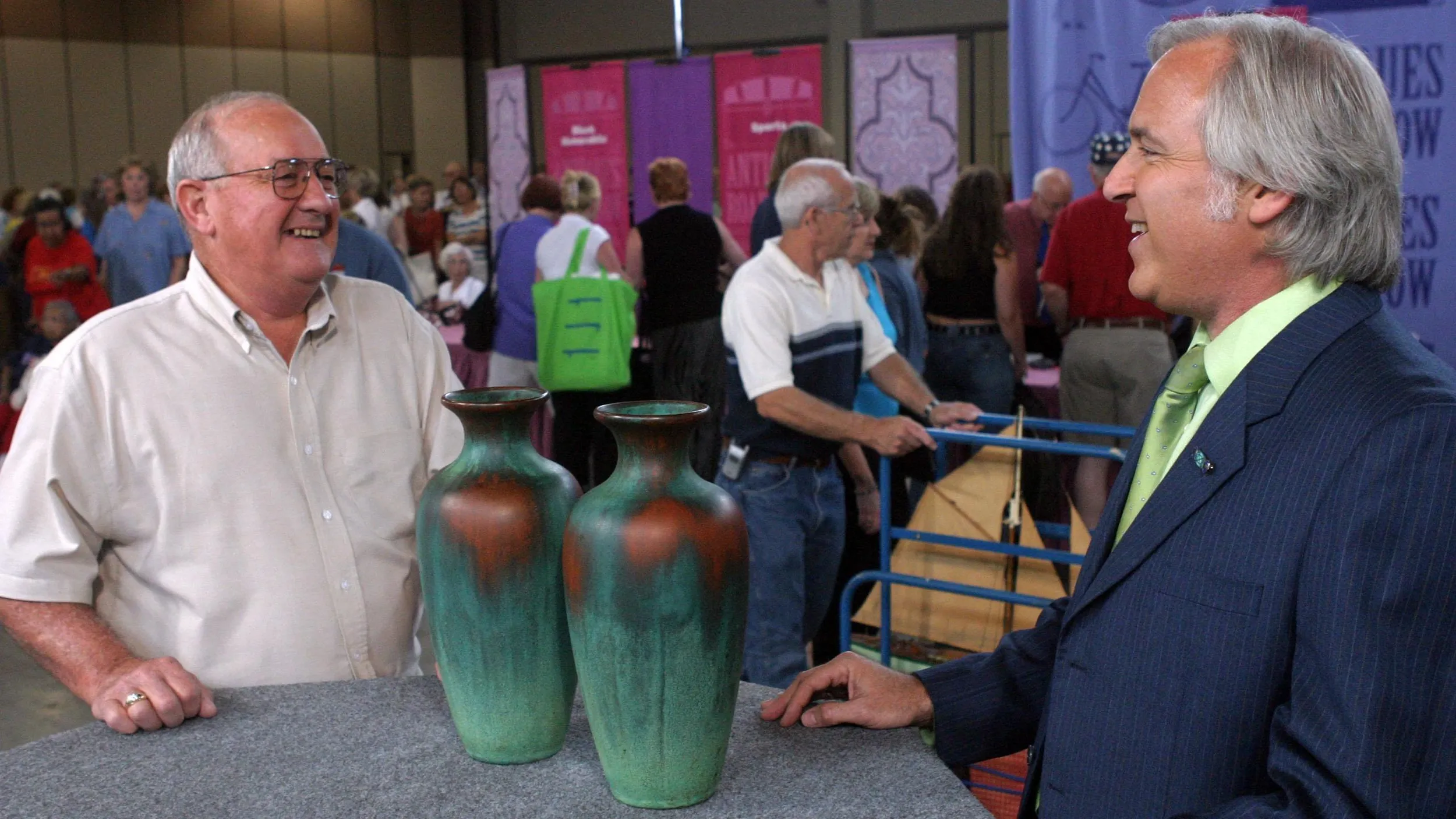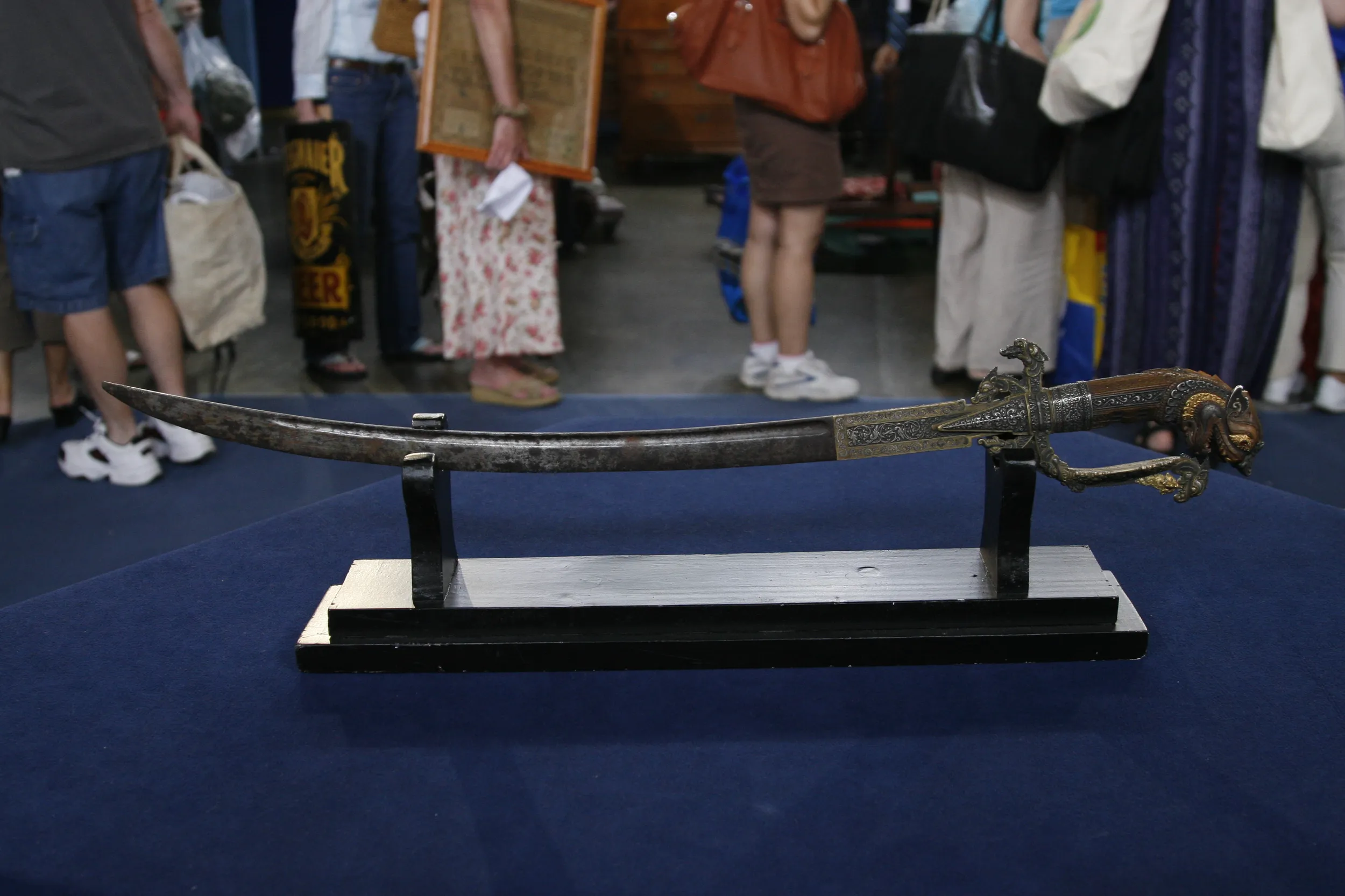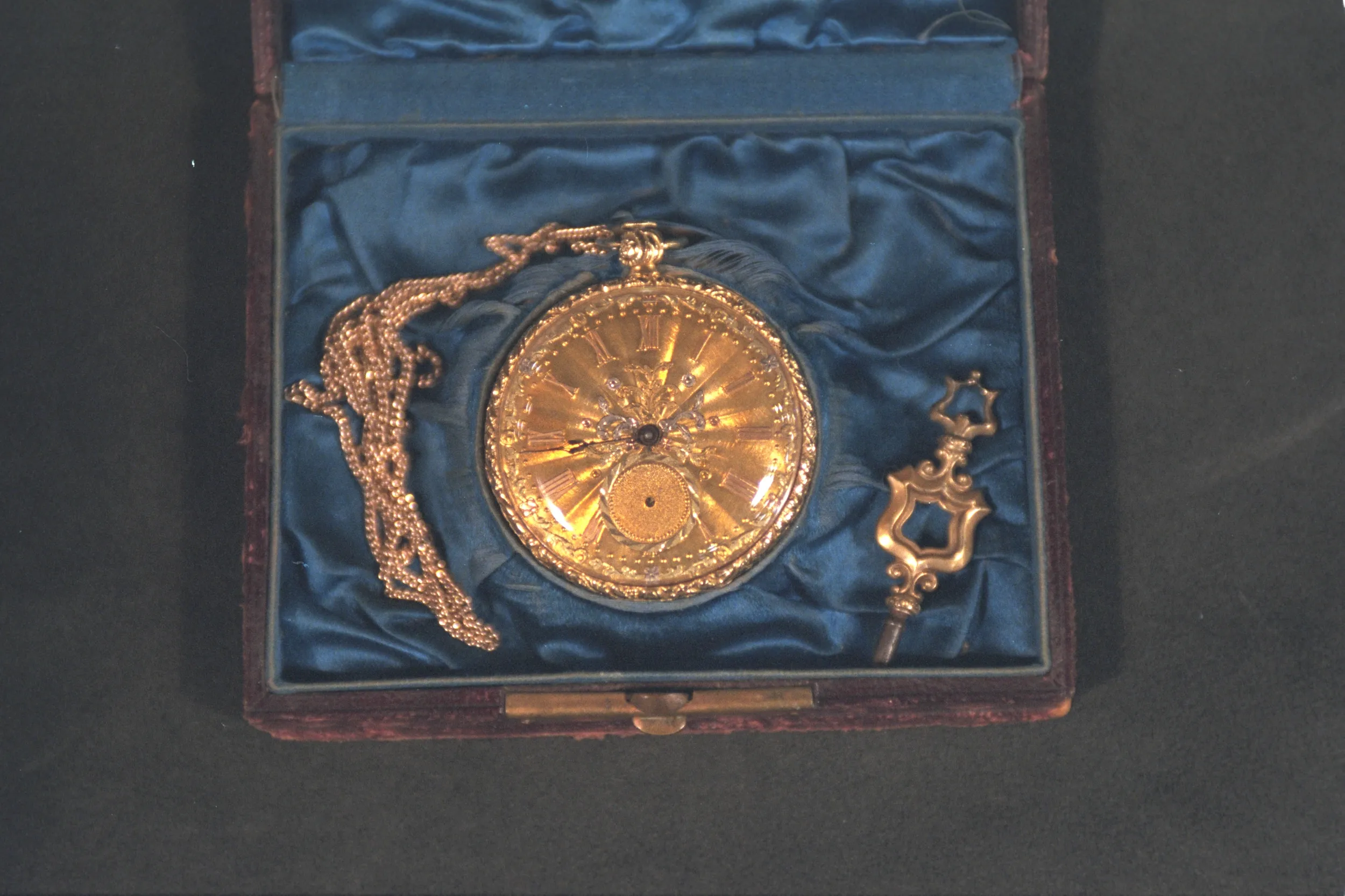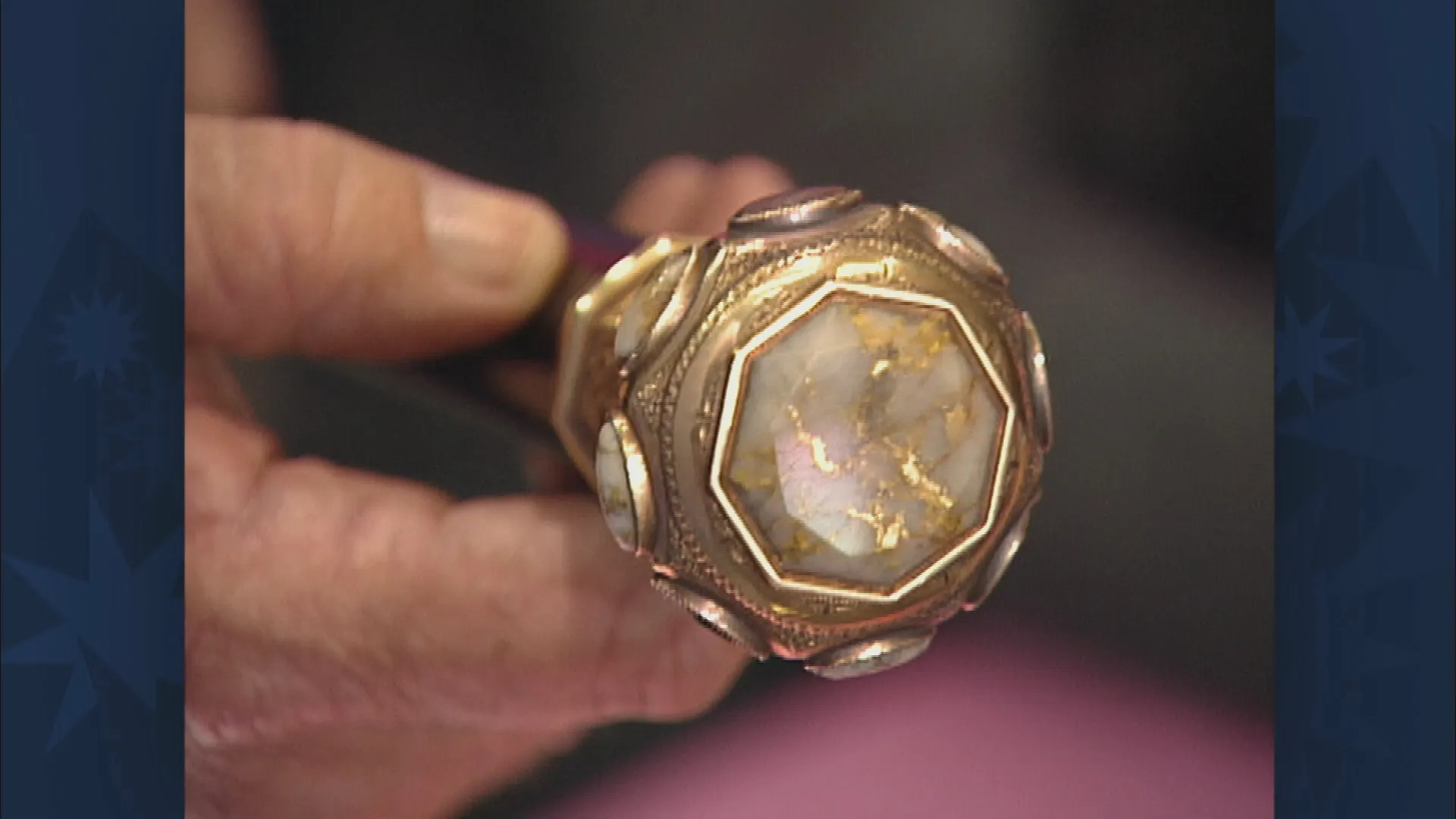GUEST: This was my mother's, and the other one I found on a little shopping spree.
APPRAISER: And what made you look for another one? You kind of liked the one that she had?
GUEST: I did, and I have had people show interest in it, so it intrigued me.
APPRAISER: Well, the bellies are the prominent piece. Of course, you've got eyes and you've got rhinestones, but the bellies are made out of Lucite. And it's a good thing that Lucite came along when it did, a new form of plastic, simply because so many metals were being used in munitions plants during the war. They substituted the acrylic for a lot of other gemstones, because it could be dyed different colors. Also, these appear to be gold, but yet, they're silver, and there again, they couldn't get the base metal, so they made the piece in sterling and then they put a coating of gold on the top of it. So it was like a vermeil finish. And they have a design patent number on the back. So one of them was made between 1944 and 1945, and the other was made between 1943 and '44. This is the older of the two, here. And these were made by Trifari. It has the crown and "Trifari" under it, which is a very, very collectible name in costume jewelry right now. And the clear Lucite is now called "jelly bellies." When they first came out, they were called "clear bellies." How much did you pay for this little slithering critter here?
GUEST: Well, he was a real bargain. He was marked $45, but just so happened everything in the shop was half-price.
APPRAISER: Ooh, he... anything you get half-price is a bargain, I agree with that.
GUEST: (laughs) Yeah.
APPRAISER: I have seen these priced, individually, as low as $700. I've seen them also priced at $2,400.
GUEST: Oh, my. This one is missing some stones, and I'm wondering, should I have them replaced?
APPRAISER: Oh, definitely, because it's going to make it more wearable for you. They should be not more than three dollars apiece.
GUEST: Okay.










